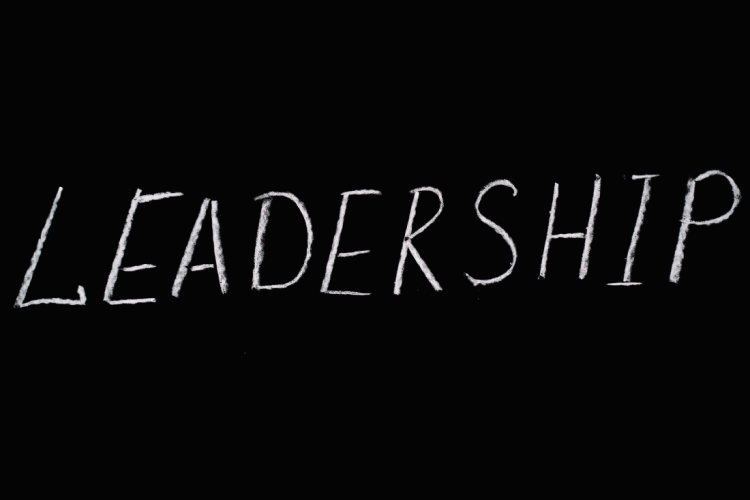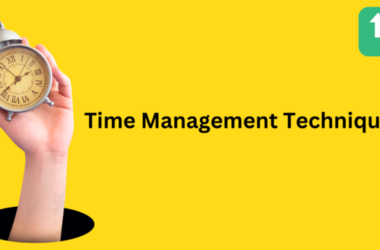Table of Contents Show
In the dynamic landscape of today’s business world, the ability to lead effectively is paramount to achieving organizational success and sustained growth .”Developing Leadership Skills for Effective Organizational Growth” encapsulates the essence of a critical journey that both emerging and seasoned leaders must undertake. As businesses navigate through unprecedented challenges and opportunities, the role of a leader extends beyond traditional managerial functions. It involves fostering a vision, inspiring teams, and cultivating an environment that nurtures innovation and resilience.
Leaders are not born; they are made.
As we embrace the challenges and opportunities that define our fast-paced world, the development of effective leadership skills becomes imperative for steering organizations toward sustainable growth and creating a legacy of resilience and excellence.
1. Understanding Leadership Foundations
Leadership starts with a grounded understanding of oneself; recognizing your values, strengths, and weaknesses sets the stage for improvement.
In the realm of effective leadership, emotional intelligence (EQ) stands out as pivotal. EQ is the ability to perceive, understand, manage, and harness emotions within oneself and in interactions with others, fostering a thriving workplace.
True leadership is cultivated through experience and intentional learning—an ongoing personal development journey.
1. Defining Leadership in Modern Organizations
Leadership is the lifeblood that fuels the engine of growth and adaptability within forward-thinking businesses.
Effective leadership is often the differentiator between resilient organizations and those that falter in the face of adversity.
In the contemporary corporate landscape, leaders are visionaries and catalysts for change, not just commanders or managers. They inspire, guide, and unlock the potential within their teams.
Leadership in today’s organizations embodies collaboration and empowerment, fostering environments where ideas thrive, and individuals reach new heights of achievement.
2. Core Competencies for Aspiring Leaders
To become a transformative leader, several core competencies are essential to master.
- Emotional Intelligence: Ability to identify, assess, and control the emotions of oneself, of others, and of groups.
- Strategic Thinking: Developing long-term visions and translating them into actionable strategies.
- Communication Skills: Effectively conveying information and engaging in active listening.
- Decisiveness: The ability to make clear, timely, and well-informed decisions.
- Inclusivity: Fostering a culture of diversity where all voices are heard and valued.
- Adaptability: Being flexible and open to change in the dynamic business landscape.
- Integrity: Maintaining ethical standards and transparency in all actions.
Each competency intertwines to shape a well-rounded leader.
Strategic thinking and adaptability empower leaders to navigate through uncertainty and evolve with the times.
Exhibiting integrity and inclusivity is non-negotiable; they cement trust and respect within any organization, fueling its growth and success.
3. The Role of Emotional Intelligence
Emotional intelligence is a linchpin of leadership, enabling one to navigate the human aspects of the workplace with ease. It fosters a responsive, empathetic environment where every member feels understood, creating a cohesive and resilient organization.
Higher EQ leads to stronger team dynamics, as leaders can effectively mediate conflicts and inspire cooperation.
Leaders with strong emotional intelligence can recognize their own emotions and those of others, thereby facilitating more nuanced communication and decision-making.
Stories of successful leadership often hinge on the leader’s ability to connect on a personal level, showing genuine care and understanding for the team’s emotional landscape.
Implementing emotional intelligence into one’s leadership approach enables anticipation of the emotional needs of others, leading to proactive rather than reactive management. This emotional foresight significantly contributes to a harmonious and productive work environment.
Ultimately, the power of emotional intelligence cannot be overstated in today’s leadership landscape. It deeply influences company culture, driving success through fostering connections, engendering trust, and nurturing a workforce that is both engaged and inspired.
2. Building a Visionary Mindset
Developing a visionary mindset is about embracing foresight, creativity, and fearlessness when confronting the unknown. This requires leaders to cultivate a space where innovation can thrive, along with resilience against the turbulence of market forces. It’s a mindset of continuous exploration, allowing you to anticipate trends and prepare your organization for future challenges and opportunities.
A visionary leader possesses the clarity to see through complexity and the agility to adapt strategies as necessary. They galvanize their teams towards compelling visions of what’s possible, fostering an atmosphere where audacious goals aren’t just dreams—they’re the blueprint for transformative action.
1. Crafting and Communicating a Clear Vision
Successful leadership hinges on the ability to create and articulate an inspiring vision with clarity and conviction.
- Define Your Core Values: Pinpoint the essences that represent the heart of your organization.
- Develop Strategic Goals: Transition from values to actionable and measurable objectives aligning with your vision.
- Identify the Big Picture: Clarify how individual goals fit into the larger vision, illustrating the roadmap to success.
- Create a Compelling Narrative: Weave your vision into a story that resonates emotionally and intellectually with your team.
- Communicate With Transparency: Share your vision honestly, addressing challenges while highlighting opportunities.
- Involve Your Team: Engage team members in dialogue, ensuring the vision is shared and co-owned across the organization.
Effective communication transforms a vision from an abstract idea into a touchstone for daily operations.
2. Strategic Thinking for Long-Term Impact
Strategic thinking is essential for charting a course beyond the near horizon. It demands foresight, analysis, and the anticipation of future challenges and opportunities.
By 2030, over half of the businesses operating today will face new competitive realities. Strategic thinking enables leaders to prepare for these shifts, crafting resilient and adaptable strategies that ensure sustainability and growth.
As leaders, we must recognize that today’s solutions may not answer tomorrow’s questions. That’s why strategic thinking focuses on understanding trends, predicting potential outcomes, and positioning the organization to thrive amidst uncertainty.
Moreover, strategic planning is not a one-off event but an ongoing process. It benefits from diverse perspectives, continuous learning, and the agility to pivot as conditions change—qualities that are critical to the long-term viability of any enterprise.
In conclusion, leaders who master strategic thinking position their organizations not just to succeed, but to shape the future of their industries.
3. Enhancing Team Dynamics and Performance
Effective leadership nurtures team dynamics that are conducive to high performance and employee satisfaction. Building trust and fostering open communication are pivotal.
To cultivate a rich soil where team dynamics can flourish, leaders should model transparency, encourage collaboration, and empower individuals to contribute their unique skills. Establishing clear goals and valuing each member’s input creates a cohesive and motivated workforce dedicated to a collective vision.
Regular reflection on team processes and outcomes enhances the adaptability and resilience of the team, vital for organizational growth and success.
1. Techniques for Effective Delegation
Effective delegation empowers teams, fosters trust, and drives efficiency. Leaders must match tasks with team members’ strengths, setting clear expectations and providing necessary support.
Choose the right person for each task. Match responsibilities with individual skills and development goals.
Clear communication is vital—convey the task’s purpose, desired outcomes, and any constraints. Empower individuals by providing context and relevance.
Trust is the currency of delegation. Provide autonomy while being available for guidance, balancing oversight with independence.
Set milestones and feedback loops to track progress. Regular check-ins encourage accountability and provide opportunities for course correction, ensuring that delegated tasks remain aligned with overall goals.
Remember, delegation is more than task assignment—it’s a strategic tool. Skillful delegation builds capacity, nurtures talent, and reinforces a culture of trust and collaboration.
Finally, assess and recognize efforts and achievements. Feedback and appreciation amplify motivation and foster a proactive, empowered workforce.
2. Fostering Collaboration and Trust
Effective leaders understand that the foundation of any high-performing team is collaboration underpinned by trust. It’s the invisible glue that holds everything together.
Building trust begins with transparency and communication. Share information freely to create a culture of openness, ensuring all team members feel valued and informed.
Encouraging team members to voice their ideas and actively listen fosters a collaborative environment. Such empowerment leads to a sense of ownership and deeper commitment to collective goals.
In a trusting team, risks are shared, and failures are seen as learning opportunities. Constructive feedback and mutual support in these situations reinforce trust and collaborative spirit.
To maintain this environment, consistency is key. Follow through on promises and show that every team member’s contribution is critical to success.
3. Feedback Mechanisms and Improvement Cycles
Continuous improvement is the heartbeat of an organization’s growth, and feedback mechanisms are its pulse.
- 360-Degree Feedback: Colleagues across the organization offering their perspectives.
- Customer Surveys: Direct insights from the end-users of products and services.
- Performance Metrics: Quantifiable data to track and stimulate progress.
- One-on-One Meetings: Personalized dialogues to address individual concerns and aspirations.
- Suggestion Box: An anonymous way for employees to propose improvements.
Refinement is not a one-off event but a perpetual cycle that propels advancement.
Understanding feedback is transformative; acting on it is a rocket fuel for development.
4. Navigating Organizational Change
Change can be like a ship navigating uncharted waters—it requires a captain with vision and adaptability. Leaders must articulate a clear vision and rally their crew against the tides of uncertainty.
In the face of change, robust communication strategies become essential. Leaders should employ open dialogues, transparent updates, and inclusive decision-making processes to maintain morale and foster a culture of resilience.
A leader’s steadfastness during transitions reflects the organization’s strength. Accentuating flexibility and continuous learning can turn the winds of change into a galvanizing force for the team.
1. Leading Through Uncertainty
Uncertainty can be daunting, but when leaders embrace it as a catalyst for growth, the organization can thrive. It’s about steering through the fog with confidence, guiding the team by the light of a strong vision.
Adapting and innovating become the mantras against a backdrop of unpredictability. Resilience is key.
In these times, a leader’s communication must be more precise, consistent, and transparent than ever, fostering an environment where every team member feels secure and informed. This, in turn, facilitates adaptability and collective problem-solving, integral to navigating the unknown.
Leading through uncertainty demands a unique blend of empathy and decisiveness. Leaders must validate their team’s concerns, harness collective insights to strategize effectively, and make tough calls—all while maintaining a semblance of normalcy.
It’s about being the anchor and the compass, steadying the ship while charting a forward course through uncharted waters. It’s this delicate balance that enables leaders to turn uncertainty from a storm into a tailwind that drives organizational momentum.
2. Sustaining Growth and Learning Culture
Every successful organization depends on continuous learning and the application of that knowledge to strategic action. A culture of growth is not just desirable; it’s essential for long-term success.
Investing in professional development is a non-negotiable investment in your company’s future. It catalyzes innovation, fostering a forward-thinking mindset across the team.
Leaders must champion a culture that values curiosity and encourages risks within a safe framework. This approach empowers individuals to take initiative and contribute unique perspectives, making growth an inclusive and collective endeavor.
Encouraging cross-functional collaboration and providing access to diverse learning opportunities creates a fertile environment for growth. It allows for the natural exchange of ideas and skills that can lead to unexpected innovations, anchoring growth not just in results, but in the ongoing process that drives those results.
Conclusion:
In conclusion, developing leadership skills is not just a personal journey but a strategic investment in the growth and prosperity of the entire organization. Aspiring leaders armed with a deeper understanding of leadership fundamentals, adaptive strategies, emotional intelligence, and effective communication are better positioned to navigate challenges and contribute to the enduring success of their organizations. May this guide serve as a valuable resource on your path to developing leadership skills and fostering effective organizational growth.
More articles:










